Steven Lyle Jordan's Blog, page 30
May 1, 2015
Avengers: Age of Ultron is everything a superhero movie should be.

Okay, everybody freeze for the obligatory group shot!
Okay, let’s just get it out of the way: Avengers: Age of Ultron is everything a superhero movie should be.�� You like superhero movies?�� Go see it. (No spoilers ahead.)
Besides doing a great treatment on the main characters, it has a sci-fi premise that actually makes some sense (in a sci-fi comic book kind of way, anyhow): Robert Downey Jr. and Mark Ruffalo (Tony Stark aka Iron Man and Bruce Banner aka the Hulk, respectively) want to make a robot peacekeeping force that will protect humanity better than the Avengers ever could; but when an alien computer intelligence gets mixed in, the program corrupts, and thinks the only way to save Earth is to destroy humanity and let evolution sort it out.�� Avengers to the rescue, in the most incredible filmed superhero battles you’ve ever seen.
There are plenty of fanboy moments, as well as character appearances and mentions that every serious comic geek will love.�� We get three new heroes in Wanda and Pietro Maximov, and the android known as the Vision.�� Writer/director Joss Whedon, as expected, turns in an A-list script that manages to highlight all of the characters with realistic and thoughtful dialogue, showing (even beyond the fight scenes) that these guys have really learned how to work together.�� Those Hulk growls?�� Lou Ferrigno is doing ’em!�� And naturally, Stan-The-Man Lee makes a cameo, and his bit is great.�� Yeah, this is just what we Marvel movie fans have been waiting for.�� People always worry that the trailers will spoil all the good parts: In this case, the trailers were often modified from the actual scenes, so what you’ve seen in the trailer isn’t necessarily what you’ll see on-screen.�� And for all the spoiled moments, there were many, many more great moments unrevealed; trust me, you won’t feel cheated.
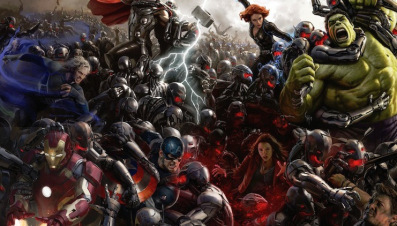 Critiques? Well, considering we’re talking about a superhero movie, there’s not much to say.�� I was glad to see Don Cheadle (James Rhodes, aka War Machine) got some good screen time… but disappointed that Anthony Mackie (Sam Wilson, aka Falcon) just got walk-ons, once at the beginning and once at the end.�� Story problems?�� Just one minor one, but considering it’s something that happens regularly in superhero comics, I’m prepared to let it slide.
Critiques? Well, considering we’re talking about a superhero movie, there’s not much to say.�� I was glad to see Don Cheadle (James Rhodes, aka War Machine) got some good screen time… but disappointed that Anthony Mackie (Sam Wilson, aka Falcon) just got walk-ons, once at the beginning and once at the end.�� Story problems?�� Just one minor one, but considering it’s something that happens regularly in superhero comics, I’m prepared to let it slide.
Battles?�� Incredible.�� Surprises?�� Some fantastic ones.�� Laughs?�� You bet.�� Cheers?�� Hell, yeah.
Romance?�� Pathos?�� Stimulating exchanges?�� Contemplative moments?�� I’m sorry, I believe you’re in the wrong theater.�� This is the superhero movie theater.�� Age of Adeline is the next one over.
So, get your snacks and drinks, settle in for a very exciting roller coaster ride, and try not to upset the non-comic-readers by squeeing at every easter egg.


April 24, 2015
Inspiration for Verdant Skies: Yellowstone is worse than we thought
 Verdant Skies was partly inspired by data on the Yellowstone Caldera, the buried supervolcano in the Wyoming-Idaho-Montana area which, if when it erupts, could create an ecological disaster akin to the process which accelerated the end of the Dinosaurs.
Verdant Skies was partly inspired by data on the Yellowstone Caldera, the buried supervolcano in the Wyoming-Idaho-Montana area which, if when it erupts, could create an ecological disaster akin to the process which accelerated the end of the Dinosaurs.
Now University of Utah seismologists have discovered even more detail about the caldera, including a magna pocket below the known pocket and five times larger.�� No, it doesn’t make the threat of an eruption more imminent; but it does mean that an eruption could be much, much worse than previously assumed.�� See more at the link.


April 22, 2015
Happy Earth Day!
April 20, 2015
Ex Machina: Humans vs A.I… of course
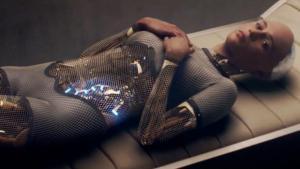
Ava, the robot featured in Ex Machina
I had the chance to see the new movie Ex Machina in a sort of “boutique” theater, the ArcLight Theater in Bethesda.�� The ArcLight presents a more upscale theater-going experience, which turned out to be perfect for Ex Machina, as it’s an upscale telling of the “humans vs A.I.” theme that is usually represented (crudely) by the Terminator franchise, (genocidally) by Galactica or (lightly) by Star Trek.
And for “upscale,” how did it do?�� Masterfully.�� Overall, a five-star experience���if you’re okay with science fiction movies that don’t feature space ships and ‘splosions and ask you to use more than five brain cells at a time.�� (Oh, yeah, there’s a bit of sexual language and nudity, so leave the kids at home.)
Read on; no spoilers ahead.

Employee Caleb and inventor Nathan
You may have already heard of the movie’s premise: That a brilliant man has invented an artificially-intelligent robot, and he arranges for one of his employees to come to his secluded lab and see if the robot can pass the Turing Test (in which the robot passes if the human tester can’t tell if he is talking to person or a machine).�� Naturally, there’s more to the story than that: The robot, named Ava, does not trust the inventor, Nathan, and urges Caleb not to, either; Caleb comes to suspect that he is being intentionally manipulated by Nathan to develop feelings for Ava; and when Caleb comes to realize that Ava will probably be destroyed at the conclusion of the test, he must decide whether Ava deserves that fate.
The movie mirrors the attitude of Nathan in that A.I., while it will be an incredible achievement, will eventually stand on Mankind’s bones and become the rulers of the planet; and so the usual distrust and paranoia between humans and robots are front and center, as well as the possibility that Caleb and Ava could somehow be the exceptions to the rule, the human and robot that could actually develop a relationship and make coexistence work.
Ex Machina excels in a number of areas: The atmosphere is rather oppressive and paranoid, fitting in well with the idea of being trapped in this lab until a resolution to the experiment is found; the cinematography is equally atmospheric and paranoid, often requiring you to search the scene to figure out what you’re seeing, or what you’re supposed to be seeing; the actors do a phenomenal job and are very convincing as humans and as robots, intentionally leaving you guessing at times exactly who is human and who is not; and the effects which create the robot Ava are downright incredible. The story is very intelligent, and doesn’t hit you over the head as it develops.
And the science is all very credible, at no time presenting you with a bit of technology that seems an outright impossibility.�� The biggest reach here is the robot’s brain, described by Nathan as some sort of gel that can alter itself to form new thought and memory pathways; but as it’s presented to the audience, it seems easy enough to accept this One Big Lie in order to ride with everything else that’s happening in the story.
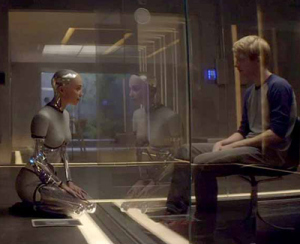 Garland and his crew put a lot of effort into making sure their robot didn’t look like any other robot you’ve seen in television or the movies… and in that task, they nail it.�� There was an interesting aspect to the robot effects (in which they replace the actress Alicia Vikander‘s body parts with robotic limbs): When I watched Vikander’s face or hands, I was sure I was watching a person; yet when I looked at her robotic arms, legs, torso or neck, and saw the purely mechanical parts working and moving���and as the minute imperfections of the effects create motions that don’t look entirely natural���I found myself accepting the idea that I was watching a mechanical being, a robot right there in the room with the human actors.�� That’s how close they came to bridging the “uncanny valley” of believable robotics… and it makes it that much easier to buy the story’s premise, and Ava’s artificial intelligence.�� For movies, the bar for believable robotics has just risen significantly.
Garland and his crew put a lot of effort into making sure their robot didn’t look like any other robot you’ve seen in television or the movies… and in that task, they nail it.�� There was an interesting aspect to the robot effects (in which they replace the actress Alicia Vikander‘s body parts with robotic limbs): When I watched Vikander’s face or hands, I was sure I was watching a person; yet when I looked at her robotic arms, legs, torso or neck, and saw the purely mechanical parts working and moving���and as the minute imperfections of the effects create motions that don’t look entirely natural���I found myself accepting the idea that I was watching a mechanical being, a robot right there in the room with the human actors.�� That’s how close they came to bridging the “uncanny valley” of believable robotics… and it makes it that much easier to buy the story’s premise, and Ava’s artificial intelligence.�� For movies, the bar for believable robotics has just risen significantly.
Naturally, the conflict in the story comes in the form of misdirection and character flaws.�� Part of me wanted to call out the fact that Nathan, a man brilliant enough to create an incredibly sophisticated and realistic robot with artificial intelligence, makes some very stupid assumptions about his control of the experiment, and about Caleb.�� But then, on the way home, I was confronted with seemingly intelligent drivers who couldn’t think their way through a four-way traffic stop.�� Yeah, sometimes very smart people have intellectual blind spots the size of Texas.�� Never mind.
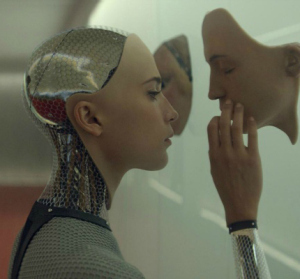 Possibly the biggest blind spot is Ava herself.�� Her cleverness is alluded to by Nathan, when he points out that she may actually have feelings… or she might just be pretending to have them.�� And until the final act, it is impossible to tell.�� This is at the heart of the story, whether Ava is capable of actually developing feelings, or if it is just another illusion, another way to pass the Turing test.
Possibly the biggest blind spot is Ava herself.�� Her cleverness is alluded to by Nathan, when he points out that she may actually have feelings… or she might just be pretending to have them.�� And until the final act, it is impossible to tell.�� This is at the heart of the story, whether Ava is capable of actually developing feelings, or if it is just another illusion, another way to pass the Turing test.
Though the story is intellectual, it’s not so involved as to be incomprehensible.�� There aren’t too many twists and turns in this movie, and it’s easy to follow what’s going on.�� It’s mostly a quiet movie, which makes its dramatic moments that much more powerful.�� As the audience, you will no doubt manage to make a few guesses as to what’s happening before it is revealed to you.�� And the ending, while it contains some surprises, works very well and doesn’t leave you feeling like it was forced or contrived in order to satisfy some studio head or test group.�� In short, it’s just the ending it ought to be… and it’s a good one.
Though there have been plenty of “robot” movies in the past, there have been very few that actually pushed the envelope and made the audience accept the inherent believability and humanity of the mechanical creatures on screen.�� Blade Runner obviously comes to mind as the touchstone of quality and impact that transcends most robot flicks.�� Ex Machina is a movie that can stand toe-to-toe with Blade Runner and not be found wanting.
I’ve noticed that, in a lot of venues, Ex Machina is being listed as a thriller… suggesting that it’s perhaps the Psycho of robot movies.�� Don’t be fooled: Someone at Universal, the movie’s distributor, just decided that the movie’ll do better in theaters if it’s not marketed as sci-fi.�� But this is decidedly not a jump-out-of-your-seat scary picture.�� Science fiction this is.�� Psychological drama this definitely is.�� Some of the smartest science fiction I’ve seen in movies in the last decade or more… hell, yes.


April 15, 2015
Superheroes have finally transitioned from comics to screens
 In the last post, I examined Marvel Comics and the refusal of the editors to bring the comic books fully into the 21st century.�� At the end, I pointed out that the comic book industry is, in reality, a very small one; and that, if it dried up and blew away tomorrow, it wouldn’t exactly be mourned by the world.
In the last post, I examined Marvel Comics and the refusal of the editors to bring the comic books fully into the 21st century.�� At the end, I pointed out that the comic book industry is, in reality, a very small one; and that, if it dried up and blew away tomorrow, it wouldn’t exactly be mourned by the world.
That’s because superheroes are too busy working other venues, most notably the big screen and various small screens, and are demonstrating that that’s where the big money is.�� And as we rapidly approach another blockbuster summer movie season, we’ll see even more examples of the real future of superheroes in the 21st century.
Superheroes in movies and television are, of course, nothing new; some of the first movie serials in the 1940s were of characters like Superman and Batman, and we’ve had numerous TV and movie treatments of various heroes since.�� But the superhero movement has boomed in recent years.�� In May 2015, Avengers 2: Age of Ultron will open in theaters, and customers will again go crazy for superheroes.�� Superheroes are the new media action stars, the replacements for the Willlises and Schwarzeneggers of the last era of blockbuster movies.
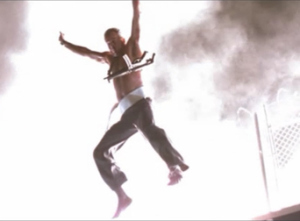
Die Hard’s John McClane, the Everyman Hero, is just not enough for modern audiences.
There are three clear reasons for this: One, superheroes represent ultimate power fantasies; they one-up the John McClanes and James Bonds of the world, whose movie exploits have constantly expanded into outlandish territories of human endurance and resiliency and strained the credibility of movie audiences.�� Superheroes ramp up that resiliency and endurance factor by their very nature, allowing audiences to expect and accept even more outlandish exploits and derring-do beyond the abilities of ordinary mortals… and get it.
Two, Hollywood special effects have finally caught up with the superhero.�� In past movies and television shows, the limits of practical and optical effects meant that superhero feats occasionally looked okay when viewed through charity-colored glasses, and often looked awful-to-laughable otherwise.�� The tagline to the 1978 movie Superman was “You’ll believe a man can fly.”�� A more to-the-point tagline would have been: “You’ll believe modern special effects can make a flying man look good.”
 But the power of computer-generated effects and augmentation have brought an incredible level of visual quality to the screen.�� A modern tagline would read more like: “Holy shit, Iron Man just broke the sound barrier!”
But the power of computer-generated effects and augmentation have brought an incredible level of visual quality to the screen.�� A modern tagline would read more like: “Holy shit, Iron Man just broke the sound barrier!”
And not just in flying do superheroes now excel: Fighting, impacting large objects, insanely expert gymnastic abilities, the wielding of incredible and unearthly power, and more, are leagues above what movie effects could once make believable.�� It’s like the jump from silent film to talkies, or from souped up 50s hot rods to Formula One racers���a quantum shift in effects… well, effectiveness.
And Three can be summed up in one word: Spectacle.�� As the art at the top of this post suggests, modern movie magic is fully capable of depicting a superhero team going hand-to-hand with a horde of killer robots… just as the last Avengers movie depicted an alien invasion force, complete with flying space-dragons, attacking us through a portal that led to deep space.�� No movies of an earlier era can compare to the level of realistic-looking activity, the number of bodies, the amount of carnage or the scope of view of these modern movies (and, of course, other fantasy-based fare like the Lord of the Rings and Hobbit movies).
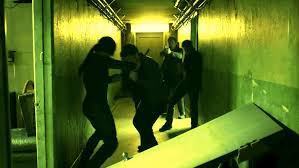
An uncut, almost 6-minute fight scene closed episode 2 of Daredevil.
And even better, this higher level of realistic effects have been brought to television and online venues as well, in many cases rivaling the spectacle and excitement of their big screen counterparts.�� And enthusiasm for the new video medium has already given us some incredible moments, superior storytelling and well-planned scenes, most recently the closing fight scene in episode 2 of the Netflix-airing version of Daredevil.
Though it isn’t an established reason, I’m going to go ahead and add Four: That moviegoing audiences have committed to the total abandonment of realism and realistic science when it comes to summer blockbusters… the less related to their mundane and unpredictable lives, the better.�� And especially in summer, where American audiences think of blockbuster movies like roller-coaster rides, something to open the summer season of fun and make them temporarily but completely forget that there’s a real world out there, waiting to prey upon them once the lights come back up.�� They are Escapism with a capitol “E.”
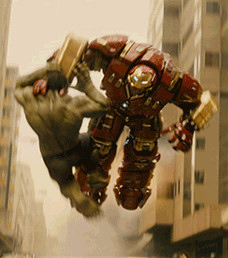 It’s no wonder that in this atmosphere, superheroes are king in the box-office; audiences might pick at the story or science in Interstellar or Gravity, but how many people watched the first Iron Man movie and didn’t wish that a cadre of terrorists using human shields could be taken out so easily by one man in armor and some high-tech smart missiles, and not hurt a single innocent?�� It’s the world we wished we lived in, the world where people have the power to deal with the craziness we all wish wasn’t out there.�� Superheroes show us how easy it is to fight the good fight when you come with extraordinary powers (or are rich enough to buy them).
It’s no wonder that in this atmosphere, superheroes are king in the box-office; audiences might pick at the story or science in Interstellar or Gravity, but how many people watched the first Iron Man movie and didn’t wish that a cadre of terrorists using human shields could be taken out so easily by one man in armor and some high-tech smart missiles, and not hurt a single innocent?�� It’s the world we wished we lived in, the world where people have the power to deal with the craziness we all wish wasn’t out there.�� Superheroes show us how easy it is to fight the good fight when you come with extraordinary powers (or are rich enough to buy them).
Critics have been warning that the present superhero craze will die off any second now.�� They’ve been making that prediction for the past 3 years, in fact.�� But I suspect they will be with us for a long time to come; it may not grow much larger on the big screen, but as the ability to make superhero television shows and online productions increases���and it will continue to increase���this particular form of escapism will stay with us for the foreseeable future.
And, of course, we can’t discount the fact that they are very lucrative, bringing in more in box-office profits in a single weekend than comic book runs make in a year, and further spurring co-marketing and tie-in products, sales of DVDs and streaming subscriptions after the initial run.�� As much as people like superhero movies, the studios like making them… and raking in the dough.
And personally���though I always long to see serious science fiction movies and TV shows, and yearn for intelligent fare to sink my neurons into���I like riding roller coasters, too.


April 9, 2015
Marvel comics deny the 21st century
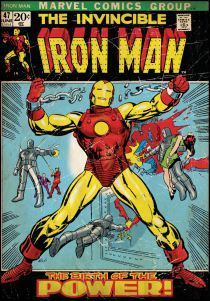 I grew up reading superhero comic books, like many boys my age.�� I was always partial to Marvel’s comics, but I read some DC heroes too, being drawn to artists and interesting stories as opposed to just being tied to specific characters.�� My interest hung on longer than some, lasting well into my adulthood; and even though my primary tastes evolved to science-fiction-themed graphic novels and stories, I still occasionally returned to my superhero roots in order to enjoy a good capes-and-spandex yarn.
I grew up reading superhero comic books, like many boys my age.�� I was always partial to Marvel’s comics, but I read some DC heroes too, being drawn to artists and interesting stories as opposed to just being tied to specific characters.�� My interest hung on longer than some, lasting well into my adulthood; and even though my primary tastes evolved to science-fiction-themed graphic novels and stories, I still occasionally returned to my superhero roots in order to enjoy a good capes-and-spandex yarn.
It had been years since I’d spent much time looking at superhero books, when I discovered something new from Marvel: The Ultimates line was essentially Marvel’s plan to update its familiar characters for the 21st century, to bring some more modern relevance to them.�� The first books I saw were an updating of the Avengers, now dubbed The Ultimates.�� We were being given new or slightly modified origins for Captain America, Iron Man, Thor, the Hulk, Giant Man and The Wasp, Hawkeye, Black Widow, Quicksilver and the Scarlet Witch, the Falcon, and even a new Nick Fury and SHIELD headquarters… all of which had more resonance with a post 9/11, terrorist-infested, nano-developing, metal-fiber-wearing, cyber-hacking and genetically-experimenting world.�� And I, for one, thought this was a fantastic way to make superheroes more popular with modern kids… and adults like me.
So I was disappointed when it ended up dying. 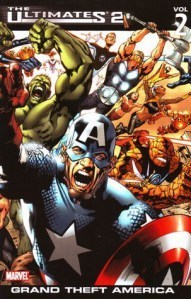 The real value of the Ultimates line was that it gave the characters a more realistic 21st century look; you could almost believe real people could be out there fighting for us on today’s streets.�� And instead of fighting outlandish monsters, the Ultimates line were fighting bad guys augmented by advanced medicine or financed by crazy moguls, scientists gone wrong or angry governments. Y’know… real stuff.
The real value of the Ultimates line was that it gave the characters a more realistic 21st century look; you could almost believe real people could be out there fighting for us on today’s streets.�� And instead of fighting outlandish monsters, the Ultimates line were fighting bad guys augmented by advanced medicine or financed by crazy moguls, scientists gone wrong or angry governments. Y’know… real stuff.
These were truly superheroes and stories for the 21st century’s more serious threats and more science-savvy world.�� And more importantly, these were more modern takes to apply to the new superhero movies: Now that modern special effects had finally caught up to the incredible feats and spectacle of superhero stories, Hollywood soon established that movies were where the real money was.
Unfortunately, Marvel experienced a backlash from fans who were attached to the original characters, and did not want to see their runs end (as they would have to, to make room for the updated Ultimates characters).�� It didn’t help that many of the Ultimates lines weren’t selling as well as those of the original characters, and some of the Ultimates storylines were handed off to writers who tried to take the more modern, gritty characters into extremely dark territory.
So Marvel is pretty much sacking the Ultimate universe, using what is known as a “comics crossover event” to redesign characters and delete underperforming alternative versions; though they will selectively preserve a few elements that connect to the movies, most of the Marvel comic book characters will revert back to their more familiar 20th century versions.�� In the meantime, the movie characters will continue to be based more on the 21st century Ultimates treatment.
It’s kind of sad to see an industry that’s decided to wax nostalgia for old fans rather than innovate for potential new ones.�� But then, comics have always been a low-profit industry, and if it died tomorrow while the movies continue to be so popular and profitable… well, the outcry wouldn’t exactly be huge.


April 7, 2015
Sports? I have other interests.
 I was recently at a get-together, and I came across someone I hadn’t spoken to in a few years.�� As we were getting re-aquainted, my friend asked me: “So, what sports are you into now?”
I was recently at a get-together, and I came across someone I hadn’t spoken to in a few years.�� As we were getting re-aquainted, my friend asked me: “So, what sports are you into now?”
I told him: “I don’t watch sports these days.”
“Why not?”
“Oh, no reason.�� Just lost interest.”
This is, of course, the lie���or, more accurately, the half-truth I told him, and would tell most anyone else, to make sure they don’t run screaming from me at parties.�� Because what would be honest for me to say would be something along the lines of:
“I’m not interested in sports, because I’m interested in other things a lot more.”
Organized sports have lost most of their appeal to me���not just because of the rampant commercialism obfuscating organized sport itself, but the fact that those commercialized high stakes have largely created an imbalance in sports, manifesting itself in two main areas: Promotion; and sports medicine.�� Promotion is just what it sounds like, seeking and promoting players for reasons other than their value on the playing field, and exploiting them in non-sports activities, like hawking shoes and sandwiches.�� Too many sports figures have become commercial celebrities, not because of their playing ability or standings, but because of their high-priced marketing contracts (RGIII, I’m looking right at you… but don’t feel bad, because you’re just the current head of a loooooong line).
 Sports medicine has become even more heinous, however: Athletes are taking advantage of badly-written rules and inadequate medical procedures to augment their play with chemicals, steroids and, soon (if not already), gene therapy���essentially thumbing their nose at the spirit of the sport in order to guarantee heightened performance and, ultimately, maximize profit.�� Athletes are no longer competing against each other, but against fat wallets and the amount and quality of doctors and drugs pumped into the other guys’ system.
Sports medicine has become even more heinous, however: Athletes are taking advantage of badly-written rules and inadequate medical procedures to augment their play with chemicals, steroids and, soon (if not already), gene therapy���essentially thumbing their nose at the spirit of the sport in order to guarantee heightened performance and, ultimately, maximize profit.�� Athletes are no longer competing against each other, but against fat wallets and the amount and quality of doctors and drugs pumped into the other guys’ system.
Ironically, many of these drugs and technologies were the stuff of science fiction themselves, not that long ago.�� But while some see it as adding to the excitement of the sports, I just see it as removing the spirit of human competition that is supposed to be the hallmark of sports in the first place.�� Yes, Virginia, it turns out there are some things science doesn’t make better.
So organized sports are rapidly abandoning real competition for blatant exhibitionism and a win-at-all-costs attitude… which takes the interest in them right out of me.
What I’m much more interested in is seeing some of those medicines and gene therapies applied to people who truly need it, like the disabled, or those with cognitive problems, to improve their lives.�� Combined with robotics and prosthetics, to give people back the arms or legs that they’ve lost, to make it easier to function in this world.
I’m also interested in promotion… of a world that applies science and technology to improving the planet and its inhabitants.�� I want to promote that to people whose lives depend on science and technology today, but who have developed a hypocritical dislike and distrust of science and what it can do for us.�� And I want to promote a curtailing of sensationalist media that likes to misrepresent, twist facts, showcase ignorance and fear, and encourage the rampant distrust in science and technology.
And finally, I’m much more interested in looking to the future; figuring out how best to get us there as a society and as individuals; to do what I can to prevent losing 90% of our homes to sea-level rise by 2050, or seeing much of that 90% die due to bad air, disease resurgence, war, terrorism, lack of water, lack of food or lack of common sense and empathy; and, not incidentally, to keeping my wife happy and healthy, and building a long and memorable life.
Now, don’t get me wrong: If you like watching sports, that’s fine for you, and I encourage you to have a good time with it.�� But these other things have much more of my daily attention than any interest in watching or keeping track of sporting events, however commercialized, exhibitionalized, unfair and dishonest they may or may not be.
So, now that the cat is out of the bag, I’ll be just over there… talking to those guys about the self-driving car that just completed 99% of a cross-country trip without human assistance…


April 1, 2015
Snowpiercer and Sunshine: Opposite and alike
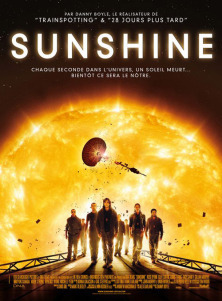 I recently had a chance to sit through the entirety of Sunshine, the Danny Boyle movie about a team of astronauts taking a nuclear payload to try to re-ignite a dying Sun.�� And when it was over, I immediately thought of��Bong Joon-ho’s movie Snowpiercer���not just because both movies happened to have Chris Evans in them���but because they are very similar, even with their very opposite settings.
I recently had a chance to sit through the entirety of Sunshine, the Danny Boyle movie about a team of astronauts taking a nuclear payload to try to re-ignite a dying Sun.�� And when it was over, I immediately thought of��Bong Joon-ho’s movie Snowpiercer���not just because both movies happened to have Chris Evans in them���but because they are very similar, even with their very opposite settings.
The opposites are quite obvious: While Snowpiercer takes place on Earth, Sunshine takes place within close orbit of the Sun; in Snowpiercer, everything around them is dangerously cold, while in Sunshine, the heat and energy of the Sun is the chief natural threat.�� And while Snowpiercer takes place aboard a train with hundreds of people aboard, Sunshine‘s crew of the Icarus II totals eight.
But it’s in the similarities that things get interesting. (Spoilers follow… these movies have been around long enough now.)
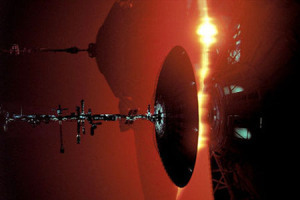 To begin with, it must be said that the science and technology that form the premise of both movies are pretty much garbage.�� Sunshine‘s premise that, in about 40 years, the Sun will start to lose power, prompting humans to restart it with a nuclear warhead that, even as massive as Manhattan island, is barely an atom beside the mass of the Sun, is just insane on many levels.�� The story suffers from clearly manufactured crises designed to introduce hardship and whittle down the size of the crew.�� Even the ship’s AI seems at one point to be smart, and another moronic, depending on the script’s needs.�� And so many of the movie’s “crises” could have easily been solved by the simple application of automation, robots or remotely-operated drones, that their absence on an otherwise sophisticated space ship is singularly damning.
To begin with, it must be said that the science and technology that form the premise of both movies are pretty much garbage.�� Sunshine‘s premise that, in about 40 years, the Sun will start to lose power, prompting humans to restart it with a nuclear warhead that, even as massive as Manhattan island, is barely an atom beside the mass of the Sun, is just insane on many levels.�� The story suffers from clearly manufactured crises designed to introduce hardship and whittle down the size of the crew.�� Even the ship’s AI seems at one point to be smart, and another moronic, depending on the script’s needs.�� And so many of the movie’s “crises” could have easily been solved by the simple application of automation, robots or remotely-operated drones, that their absence on an otherwise sophisticated space ship is singularly damning.
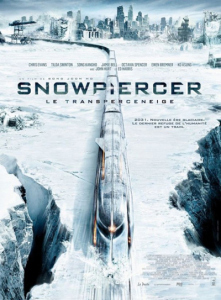 Compare this to Snowpiercer‘s premise that a single globe-trotting train carries the last of humanity after a botched attempt to halt global warming puts the planet into a deep-freeze.�� An insane hierarchy rules the train, prompting regular dissension and riots, while the train itself is beginning to break down and requires the additional efforts of people to take the place of failing parts to keep it running.�� The Snowpiercer has no AI, just Nazi-like soldiers led by a schoolmarm-from-Hell to keep order.�� And no good reason is ever given for the fact that the train can never stop.
Compare this to Snowpiercer‘s premise that a single globe-trotting train carries the last of humanity after a botched attempt to halt global warming puts the planet into a deep-freeze.�� An insane hierarchy rules the train, prompting regular dissension and riots, while the train itself is beginning to break down and requires the additional efforts of people to take the place of failing parts to keep it running.�� The Snowpiercer has no AI, just Nazi-like soldiers led by a schoolmarm-from-Hell to keep order.�� And no good reason is ever given for the fact that the train can never stop.
Both movies use elements of nature as a familiar threat���cold versus heat���but also use contentious or crazy humans to represent the more primary threat to success of their endeavors.�� In both movies, natural human failings cause major issues: In Sunshine, a navigator makes a calculation mistake that kicks off a major disaster on-board the Icarus II… said problem that would not have happened if a single additional member of the crew of eight (or the AI, for God’s sake!) had been involved with the navigator’s decision-making.�� Snowpiercer‘s biggest human failing is personified by the Conductor, who believes the extreme stratification of the train’s occupants is the only way to keep things functioning.
And both movies have a problem with scale that is unfortunately typical to science fiction movies: In Sunshine, the Icarus II comes across the ill-fated Icarus I, still in solar orbit, and it requires a minor course-correction to come alongside it.�� We’re talking the Sun, here, and the likelihood that two ships launched at different times would happen to approach the Sun at nearly the same spot���that the other ship would’ve remained in orbit in that spot���or that the Icarus II would only require a minor course correction to reach it���is just too-typically coincidental.�� In Snowpiercer, the train runs along a track that circumnavigates the continents; however, in one schoolroom scene we are shown the basic layout of the track, and at the speeds the train was clearly moving, one full circumnavigation would only take a few months… not the exact year that is depicted.�� Both movies choose scales that are poetic or convenient, but nowhere near realistic.
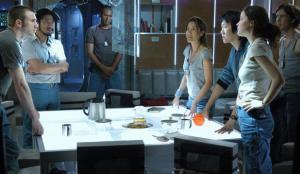 So, in both movies, it is the themes and characterizations that become the major draw of the movies, not the premise or the science/technology involved.�� Sunshine and Snowpiercer are both about a small group of humans fighting against the bad hand dealt them, and the incredible extreme of natural environments they must face; and both showcase the real threat to human survival: The actions of other humans to sabotage the group, either unknowingly or intentionally, and almost always for selfish or stupid-nigh-unhinged reasons.
So, in both movies, it is the themes and characterizations that become the major draw of the movies, not the premise or the science/technology involved.�� Sunshine and Snowpiercer are both about a small group of humans fighting against the bad hand dealt them, and the incredible extreme of natural environments they must face; and both showcase the real threat to human survival: The actions of other humans to sabotage the group, either unknowingly or intentionally, and almost always for selfish or stupid-nigh-unhinged reasons.
Both movies feature a stellar cast, including some notable veterans of science fiction or fantasy productions.�� Coincidentally, Chris Evans gets to play the same single-minded hero in both movies, dedicated to winning (dropping the payload into the Sun, and reaching the conductor of the train), no matter what.�� Single-mindedness is dominant in the characters of both movies, with just a touch of eccentricity in a few key characters, at least one outright coward, and a seemingly-indestructible and equally-single-minded antagonist to fight.�� There are no ambivalent characters here, no one to prompt the audience to second-guess their intentions; every character is pretty much a trope.�� In the end of both movies, the cast has a distinctly unhappy ending���between the two movies, only two people survive���yet, at the end, and despite everyone’s best efforts, there is the implication of hope for Humanity after all.
A high point of both movies are the productions themselves.�� The sets, casts and trappings of both worlds are exquisite to behold.�� Boyle and��Bong also applied some wonderfully inventive photographic techniques to filming both the dangers of space in solar orbit, and the hazards of existence on a moving train on a snow-covered world.�� They are so beautifully filmed that it is almost easy to ignore the fact that the story and science of both are just batshit-nuts.
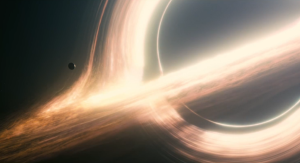 And it’s so ironic that, knowing this, I put both of these movies on my list of superior science fiction films a few months back.�� Yes, I’ve tried to advocate the serious use of real science and believable technology in SF… and neither of these movies, I’m sorry to say, live up to that standard.�� But in both cases, it’s the humanistic concepts they represent, rather than the veracity of the science depicted, that makes these better movies than many on the Rolling Stone list.
And it’s so ironic that, knowing this, I put both of these movies on my list of superior science fiction films a few months back.�� Yes, I’ve tried to advocate the serious use of real science and believable technology in SF… and neither of these movies, I’m sorry to say, live up to that standard.�� But in both cases, it’s the humanistic concepts they represent, rather than the veracity of the science depicted, that makes these better movies than many on the Rolling Stone list.
In short, for the concepts depicted, and the quality of the productions, I recommend both movies… even though I have to simultaneously recommend that you check your physics textbooks at the door when you watch them.

March 30, 2015
Star Trek: Federation
 I was just recently introduced to a concept for a Star Trek TV series, conceived of about ten years ago to pitch to Paramount/CBS.�� It has re-entered the news recently since Star Trek is rapidly coming up on its 50th anniversary, and so many people would like to see a new Trek TV series on the air when the date hits.
I was just recently introduced to a concept for a Star Trek TV series, conceived of about ten years ago to pitch to Paramount/CBS.�� It has re-entered the news recently since Star Trek is rapidly coming up on its 50th anniversary, and so many people would like to see a new Trek TV series on the air when the date hits.
Alas, this idea was never actually pitched to Paramount/CBS, as JJ Abrams came along and made his new movie, which did well enough that Paramount put aside the idea of creating a new TV show for the foreseeable future.�� Recent rumors, largely circulated by Latino Review, that this series idea was actually in development, apparently have no basis in fact.
And it’s a shame, because Star Trek: Federation, while maybe not being a perfectly fleshed out proposal, nonetheless has some great ideas for a new Trek series.
Some details and comments about the concept are at TrekMovie.com.�� The basic background is the most interesting part: Federation would take place��about 600 years after the period depicted in Star Trek: The Next Generation, when the Federation has become comfortable but complacent, with no real threats or interest in further exploration.�� Many of the races known to Star Trek fans have evolved their cultures in those 500 years, and the alpha quadrant has evolved as a result of those changes.
I love this: It creates a brand new dynamic to the Federation, its allies and former enemies, and makes room for introducing some new characters and species that can become part of the new Trek’s canon.�� There are a few races introduced in The Next Generation that I always thought we should eventually see more of… the computer-expert Binars come immediately to mind (one of the only good things to come out of TNG’s first season).�� It could be interesting to see how the Borg develop, now that TNG has given them the ability to be individuals.�� And as I recall, the holodeck gave birth to a new life-form in one episode.�� Then there are the Shape-Shifters from Deep Space Nine, various races encountered by Voyager… honestly, it’s a nice list, and could really create a great new dynamic to the show.
The premise of the show would be a new threat to a Federation that really is no longer equipped to handle it.�� So the Federation builds a new starship Enterprise, the first in a few hundred years, and sends it out with a crew dedicated to finding out more about the new threat, known as the Scourge, and finding ways to defeat it.�� This opens the series up to a similar mission of exploration and occasional conflicts that were the hallmark of the original Star Trek.
Now, I’ve said in the past that I’d love to see Star Trek get away from the paramilitary ships and missions, and to showcase more of the civilian lives of the Federation: and I still stand by that opinion.�� In fact, a civilian Federation show set 600 years after Next Gen would work, too.�� But if we have to have the old “5 year mission” scenario, at least setting it that far forward, with a lesser Federation, will spice it up considerably.
In fact, the idea reminds me a bit of Gene Roddenberry’s Andromeda series, about a Captain and his ship, caught at the event horizon of a black hole for about 500 years (Roddenberry apparently loved the Buck Rogers’ “man out of time” premise���he reused it in many series concepts), to eventually escape and find his version of the Federation has collapsed, the other ships of the fleet are gone, and galactic civilization is on the wane.�� So the Captain sets out to collect a new crew and rebuild his Federation and its high principles with their help.�� (Andromeda ran for five seasons, and somehow got virtually no notice in that time.)
Much of the rest of the pitch involved the changes to many of the alien races common to Star Trek, most notably the Vulcans, Romulans, Klingons, Cardassians, Bajorans, Ferengi and the Borg.�� There are some interesting ideas, some predictable ones, and some which I just didn’t like (the idea of the Klingons evolving into “warrior-mystics” being high among the ideas to dump, in my opinion).
And there were a few notes about the main characters, notably the Captain of this new ship… whose last name would be Kirk, who had some prior but unknown experience with the Scourge, and who was later drummed out of Star Fleet following some conduct problems; but was forced back into service to deal with the Scourge.�� To be specific about why I don’t like this:
Naming the character Kirk is kinda dumb���there’s no reason he should be a relation to the most famous and celebrated officer of Star Fleet, any more than the other Captains of the other series were named after past characters (the same goes for the ship… there are other cool names besides Enterprise);
Having him just happen to have some prior knowledge about the Scorge���but buried in his subconscious and mostly inaccessible���is a lame old trope, and unforgivably lame for the main character of your show;
Having an officer thrown out of Star Fleet for inappropriate behavior, bringing him back in to assist, and having him end up as Captain of the ship, is highly unbelievable.
So, yeah, the pitch needed some work.�� But overall, it sounds like a show I would’ve watched.�� Maybe even watched the crap out of.�� It definitely sounds better than the drek we got from Abrams’ movies; in fact, it could have been the basis for a trilogy of movies that really would have represented the best of the new and old elements of Star Trek to a new audience.

March 26, 2015
#Bring the Future
The worst thing we can do is turn away the Future because it is uncomfortable. We need to look the uncomfortable parts of the Future right in the eyes. How else will we make it better?
Parts of the Future will be uncomfortable. Only accepting and directly addressing that will lessen discomfort. We can no longer afford to hold the Future at bay.
���
#BringTheFuture���.








